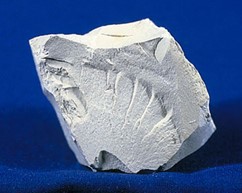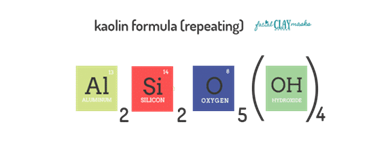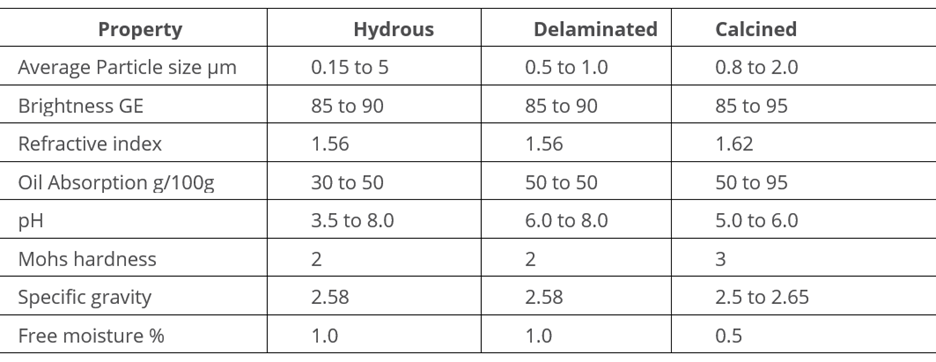 Kaolin is an important pigment in coatings, but it also has a large use in personal care. In March of 2025, an article on “Next generation natural deodorants…”[1] was included in Prospector Knowledge Center. From enhancing texture to improving opacity and durability, kaolin is a versatile and cost-effective phyllosilicate clay in paint formulations, but does find use in cosmetics, and in the general sense of hiding or beautifying a substrate like skin, it can be considered a coating. Rather than trying to cover both application areas, I will note that there are numerous producers of many different types of kaolin which can be found in Ultrus™ Prospector. Imerys, Burgess Pigment Company and Vanderbilt Minerals, LLC among others, are listed. Vanderbilt, by way of the footnotes[2],[3] includes many cosmetic lab formulations utilizing kaolin. To keep it straightforward I will focus on coatings and leave the foot notes, but will mention some personal care uses for the more notable applications. Type “search for kaolin” in the search bar and there are many entries under personal care in Ultrus™.
Kaolin is an important pigment in coatings, but it also has a large use in personal care. In March of 2025, an article on “Next generation natural deodorants…”[1] was included in Prospector Knowledge Center. From enhancing texture to improving opacity and durability, kaolin is a versatile and cost-effective phyllosilicate clay in paint formulations, but does find use in cosmetics, and in the general sense of hiding or beautifying a substrate like skin, it can be considered a coating. Rather than trying to cover both application areas, I will note that there are numerous producers of many different types of kaolin which can be found in Ultrus™ Prospector. Imerys, Burgess Pigment Company and Vanderbilt Minerals, LLC among others, are listed. Vanderbilt, by way of the footnotes[2],[3] includes many cosmetic lab formulations utilizing kaolin. To keep it straightforward I will focus on coatings and leave the foot notes, but will mention some personal care uses for the more notable applications. Type “search for kaolin” in the search bar and there are many entries under personal care in Ultrus™.
Kaolin’s chemical structure makes it the ideal material to incorporate into paint applications. Its aluminum silicate composition provides stability and resistance against chemical reactions, helping the paint retain its properties over time.
Kaolin, also known as kaolinite or China Clay, is a naturally occurring mineral consisting mostly of hydrated alumino-silicate with the chemical formula Al2Si2O5(OH)4. It was first discovered by the Chinese in high mountain ridges in China some 3000 years ago and was primarily used for coating paper, making pottery and producing fine porcelain. The word itself comes from the village “Kaoling” or “Gaoling” meaning “High Ridge” which is now part of Jingdezhen Prefecture in Jiangxi Province and an area rich in kaolin deposits.

The physical characteristics of kaolin are equally impressive. Its plate-like particle structure creates excellent coverage and flow properties in paint. Visualize tiny, flat plates arranging themselves to create a smooth, even surface – that describes what kaolin does in paint. One of kaolin’s qualities is its ability to improve paint opacity. The flat particles align parallel to the substrate surface, creating multiple layers that effectively hide what’s underneath. Kaolin is naturally white and helps improve color consistency and opacity in paint, making colors appear more uniform and truer.
Work smarter and win more, with powerful software to manage regulatory, supply chain and sustainability challenges, learn more about ULTRUS here!
Kaolin is the ultimate paint durability enhancer. It helps increase scratch resistance, decreases cracking and enhances weatherability – almost like adding armored panels for protection. The natural, unheated form of kaolin brings its own set of benefits to paint formulations. It’s particularly good at improving the paint’s workability and application properties.
Kaolin positions itself among other paint additives (as opposed to just a pigment) as a unique value proposition, being readily available, relatively cost-efficient to process, and contributing numerous benefits all-in-one package – making it a smart cost-cutting decision for manufacturers as well as consumers alike. It provides opacity, rheology when it is formulated into a modifier, a buffering agent and several other qualities.
 In personal care it absorbs extra oil from the skin, thereby keeping the pores unclogged. It also has cleansing properties that can remove dirt and impurities from your skin pores that lead to acne breakouts. Kaolin clay has soothing qualities that can calm your irritated skin caused by insect bite or any skin rash. It has mild healing properties that help to soothe any type of irritation and redness on your skin. This clay stimulates your skin cells and makes your skin tone even. If you use it regularly, you may see a noticeable change in your skin tone. Apart from skincare, you can also use kaolin clay as a natural shampoo to remove oil, dirt and other pollutants from your scalp. It also boosts the blood circulation to your scalp, resulting in strong hair follicles. The ability of kaolin clay to draw out impurities makes it an excellent substitute in whitening toothpaste. It can remove the toxins and gunk from your teeth and make them whiter.
In personal care it absorbs extra oil from the skin, thereby keeping the pores unclogged. It also has cleansing properties that can remove dirt and impurities from your skin pores that lead to acne breakouts. Kaolin clay has soothing qualities that can calm your irritated skin caused by insect bite or any skin rash. It has mild healing properties that help to soothe any type of irritation and redness on your skin. This clay stimulates your skin cells and makes your skin tone even. If you use it regularly, you may see a noticeable change in your skin tone. Apart from skincare, you can also use kaolin clay as a natural shampoo to remove oil, dirt and other pollutants from your scalp. It also boosts the blood circulation to your scalp, resulting in strong hair follicles. The ability of kaolin clay to draw out impurities makes it an excellent substitute in whitening toothpaste. It can remove the toxins and gunk from your teeth and make them whiter.
Kaolin that has been heated at high temperatures can alter its structure and enhance certain properties.
Titanium dioxide extenders for coatings – calcined kaolin or hydrous kaolin? (Lawrence Industries)

NovaPowder® is an asbestos-free talc substitute based on kaolin, Modified Corn Starch and coating. It improves skin adherence and enhances pressability of powder applications, in which it gives softness and brightness. NovaPowder® is available in different surface treatments and particle sizes to perfectly replace any types of Talc. It acts equivalently in terms of friction forces, sensorial properties, and viscosity.[1]
Kaolin is a natural mineral, and its production generally has a lower environmental impact compared to synthetic alternatives. However, responsible sourcing remains crucial. The mining of kaolin requires careful environmental management. Modern practices focus on minimizing impact and implementing effective land reclamation strategies.
Why Is Kaolin Used in Paint? (ShreeRam Kaolin)
Six Reasons to Add Kaolin to Coating Products (EPIC Powder Machinery)
Some formulation considerations for titanium dioxide replacement or extension in gloss and semi-gloss paints.
- If TiO2 content is >25 wt%, then a 10% replacement with hydrous kaolin is possible
- If TiO2 content is 20 to 25 wt%, then an 8 to 10% replacement with hydrous kaolin is possible
- If TiO2 content is 10 to 20 wt%, then a 5 to 8% replacement with hydrous kaolin is possible
Kaolin plays an invaluable role in paint manufacturing; it not only acts as an ingredient but is an indispensable mineral that enhances opacity and durability while being cost-effective which results in high quality formulations.
1 Formulating Next-Generation Natural Deodorants
2 926_Anti_Aging.pdf Vanderbilt Minerals, LLC – 20 prototype formulations of various types
3 No_362_masthead2.pdf Vanderbilt Minerals, LLC – Prototype formula
4 NovaPowder® by The Innovation Company® – Personal Care & Cosmetics
The views, opinions and technical analyses presented here are those of the author or advertiser, and are not necessarily those of ULProspector.com or UL Solutions. The appearance of this content in the UL Prospector Knowledge Center does not constitute an endorsement by UL Solutions or its affiliates.
All content is subject to copyright and may not be reproduced without prior authorization from UL Solutions or the content author.
The content has been made available for informational and educational purposes only. While the editors of this site may verify the accuracy of its content from time to time, we assume no responsibility for errors made by the author, editorial staff or any other contributor.
UL Solutions does not make any representations or warranties with respect to the accuracy, applicability, fitness or completeness of the content. UL Solutions does not warrant the performance, effectiveness or applicability of sites listed or linked to in any content.

 ) as the applications and development manager in Core R&D in the Coatings & Functional Polymers Group. He also managed the TS&D group for coatings while at Dow Chemical (1995-99) and held positions at Rhodia (Laboratory Manager, Latex & Specialty Polymers (1989-95)) and was the Development Chemist, exterior latex paints at Benjamin Moore & Co. (1979-89).
) as the applications and development manager in Core R&D in the Coatings & Functional Polymers Group. He also managed the TS&D group for coatings while at Dow Chemical (1995-99) and held positions at Rhodia (Laboratory Manager, Latex & Specialty Polymers (1989-95)) and was the Development Chemist, exterior latex paints at Benjamin Moore & Co. (1979-89).